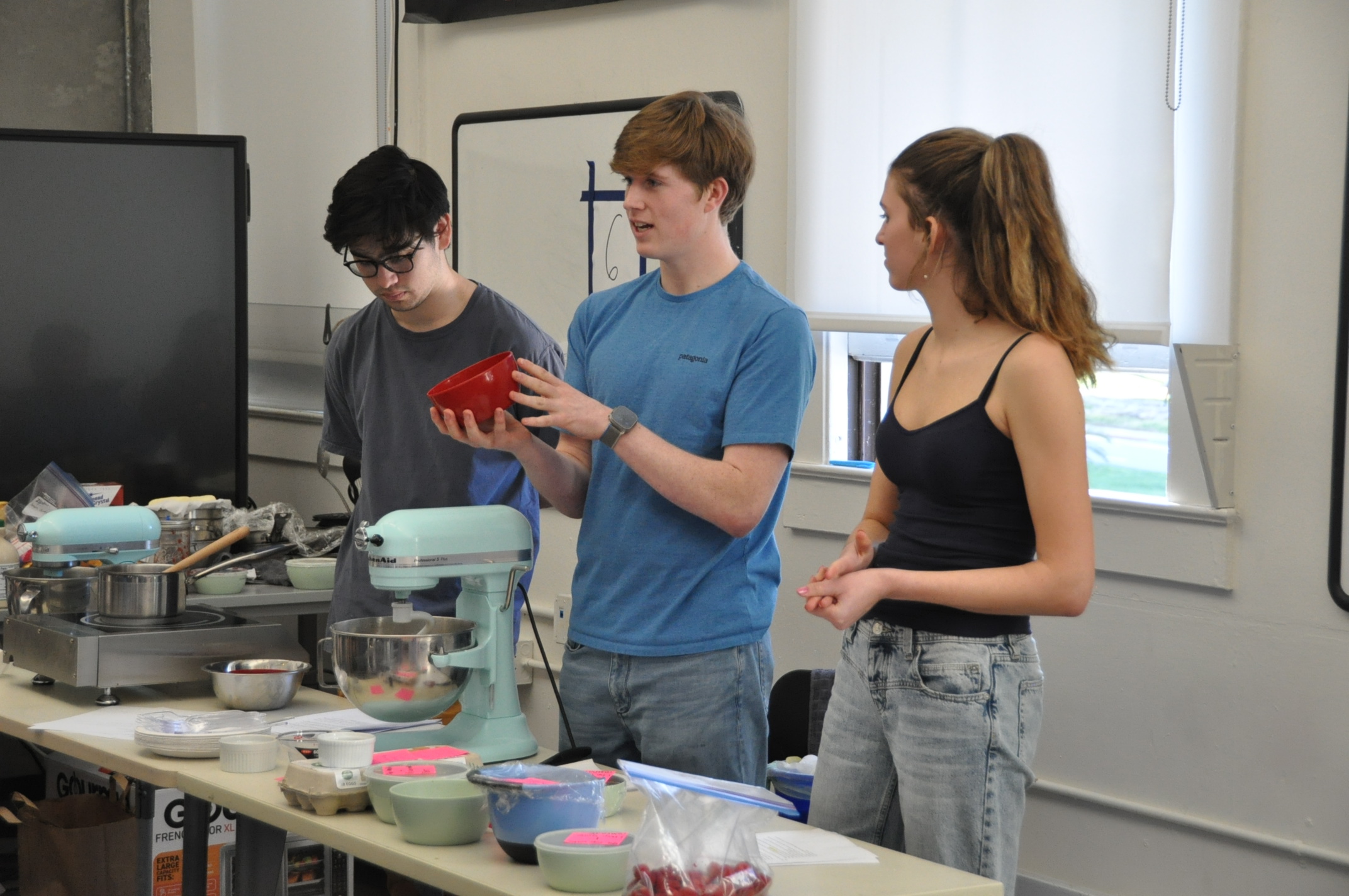
By Julie Spector-Sprague, Bay physics and chemistry teacher
One of the things about chemistry that makes it seem hard at first is its abstractness: you have to understand and reason about things that you can’t see. In cooking, though? The causes might be “invisible” but their impact can be tasted, felt, and seen. For this Immersive course, Better Cooking Through Chemistry, we transform my physics classroom into a working laboratory–kitchen.
This class builds off of what students have learned in both the Chemistry and Biology 1 series, so we have a good point from which to explore and a very tangible way to understand the science. We begin with pancakes and ricotta. These two projects allow us to start from relatively simple techniques to gain an understanding of chemical means. In the pancake project, we specifically look at the effect of baking powder and baking soda on flavor and texture. That is an excellent gateway into acid-base chemistry, which we can use as a path to learn about emulsions, but to think about emulsions and acidity, you have to think about polarity, which is a concept they study in Chemistry 1. Then when we make ricotta, we start by looking at it as an acid-base reaction, and we also get into a bit of biology by examining what goes on with cheese in general.
It is difficult to run controlled experiments with anything involving food because there are so many conditions to contend with—humidity and temperature are just two variables. But this is a cooking and chemistry class, so we run experiments all the time, and the students have to constantly explain the science of what they’re observing. We usually do two or three controlled experiments a week. Fudge-making is a particularly good one because small variations in the process can produce wildly different results. So we get to see what happens when group 1 precisely follows the traditional process, group 2 starts stirring at a different temperature, and so on. We use this to understand crystallization and colligative properties.
The students write up lab results on every project. Sometimes the experiments are within small lab groups and sometimes they are across multiple groups, so students are also learning how to be very systematic in their procedures and work together on how they’ll proceed with each project. We keep photo journals as part of the lab report process and do a lot at the whiteboards, always actively comparing between experiments. Another fun element of this class is that the students learn the importance of precision in their language when they discuss and write up their results—“heat” and “temperature” are not the same thing!
On exhibition day, different groups create a dish or meal they have planned and explain the science of what is happening as they cook for the lucky audience members, who get to sample lots of delicious creations.
The Bay School offers many opportunities in the applied sciences, including Biotechnology, Astronomical Research Seminar, and Environmental Science. Learn more about our curriculum.
#BaySchoolScience #BaySchoolBrave #BaySchoolSTEM












.jpeg&command_2=resize&height_2=85)





